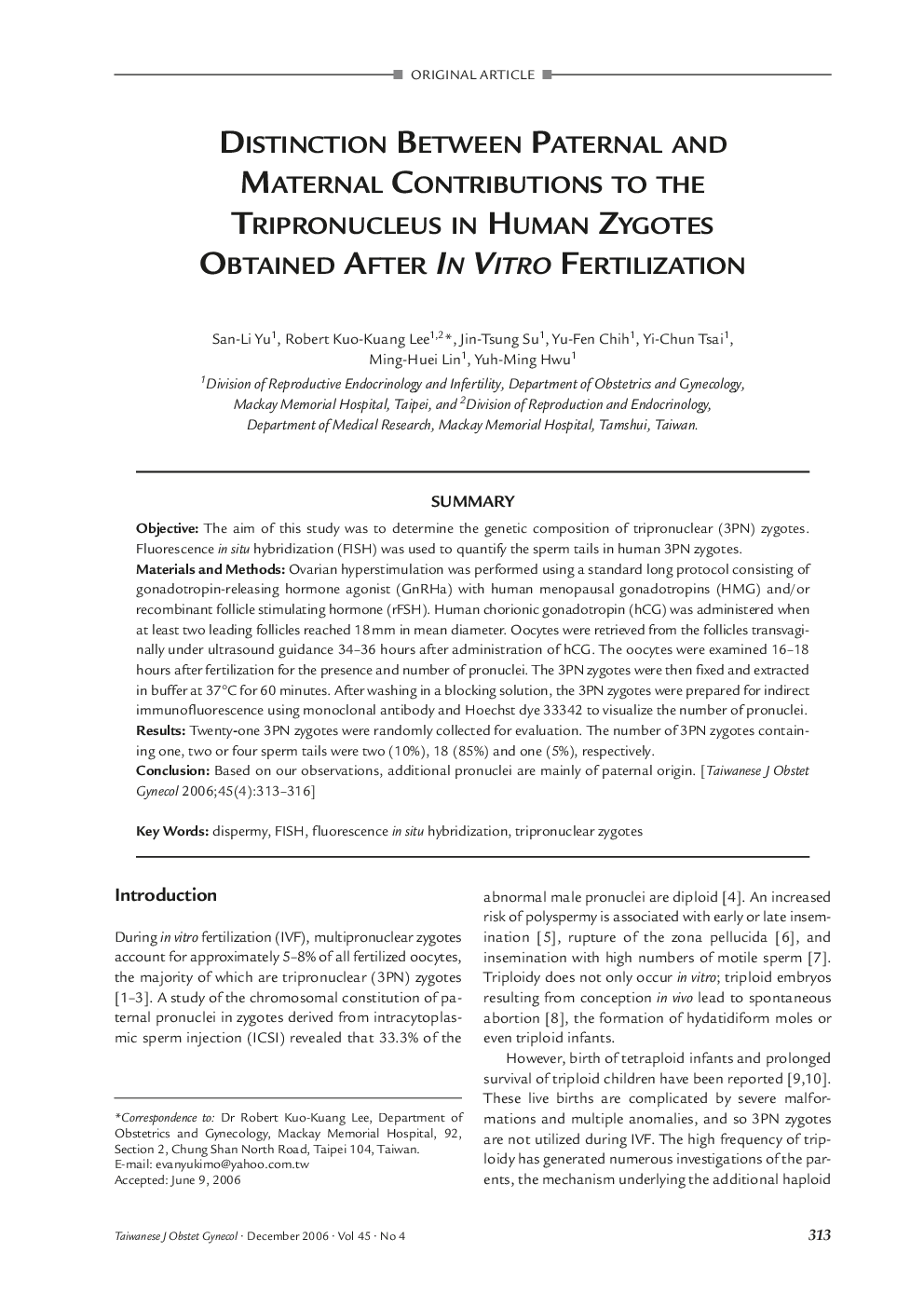| Article ID | Journal | Published Year | Pages | File Type |
|---|---|---|---|---|
| 3976314 | Taiwanese Journal of Obstetrics and Gynecology | 2006 | 4 Pages |
SummaryObjectiveThe aim of this study was to determine the genetic composition of tripronuclear (3PN) zygotes. Fluorescence in situ hybridization (FISH) was used to quantify the sperm tails in human 3PN zygotes.Materials and MethodsOvarian hyperstimulation was performed using a standard long protocol consisting of gonadotropin-releasing hormone agonist (GnRHa) with human menopausal gonadotropins (HMG) and/or recombinant follicle stimulating hormone (rFSH). Human chorionic gonadotropin (hCG) was administered when at least two leading follicles reached 18 mm in mean diameter. Oocytes were retrieved from the follicles transvaginally under ultrasound guidance 34-36 hours after administration of hCG. The oocytes were examined 16-18 hours after fertilization for the presence and number of pronuclei. The 3PN zygotes were then fixed and extracted in buffer at 37°C for 60 minutes. After washing in a blocking solution, the 3PN zygotes were prepared for indirect immunofluorescence using monoclonal antibody and Hoechst dye 33342 to visualize the number of pronuclei.ResultsTwenty-one 3PN zygotes were randomly collected for evaluation. The number of 3PN zygotes containing one, two or four sperm tails were two (10%), 18 (85%) and one (5%), respectively.ConclusionBased on our observations, additional pronuclei are mainly of paternal origin.
